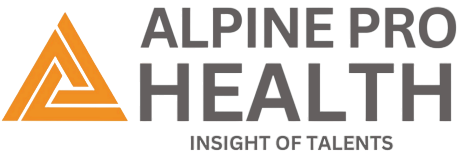In today’s fast-paced healthcare environment, ensuring accurate clinical documentation isn’t just about keeping records, it’s about securing the financial health of medical practices and hospitals. Every claim denial represents lost revenue, wasted administrative efforts, and potential delays in patient care. That’s where Clinical Documentation Improvement (CDI) comes in. A well-structured CDI program strengthens medical records, ensuring they accurately reflect patient conditions, treatments, and medical necessity. By improving documentation quality, healthcare providers can reduce errors, minimize claim denials, and enhance overall reimbursement processes. In this article, we’ll explore how CDI helps prevent claim denials and why it’s an essential part of a successful revenue cycle strategy.
Understanding Clinical Documentation Improvement (CDI)
CDI is a systematic process designed to enhance the accuracy, completeness, and reliability of medical documentation. It ensures that patient records precisely reflect the diagnoses, procedures, and treatments administered. A well-structured CDI program bridges the gap between healthcare providers, coding professionals, and insurance payers, minimizing discrepancies that often lead to claim denials.
Common Reasons for Claim Denials
Claim denials in medical billing can occur for various reasons, including:
- Incomplete or Inaccurate Documentation – Insufficient details in medical records can lead to claim rejections.
- Coding Errors – Incorrect or non-specific ICD-10 and CPT codes result in non-compliance with payer requirements.
- Medical Necessity Issues – If documentation fails to justify the necessity of a procedure, payers may reject claims.
- Lack of Provider Signatures and Authentication – Unauthenticated records can lead to compliance issues and denials.
- Billing for Uncovered or Unapproved Services – Payers deny claims for services not covered under a patient’s insurance plan.
How CDI Helps Reduce Claim Denials
A strong CDI program helps mitigate these issues through the following approaches:
1. Enhancing Documentation Accuracy
CDI ensures that patient records accurately reflect the severity of illnesses, medical interventions, and the justification for treatments. By maintaining clear and detailed documentation, healthcare providers reduce discrepancies that could trigger denials.
2. Optimizing Coding Accuracy
CDI specialists collaborate with Medical Coders to ensure that all diagnoses and procedures are assigned the most accurate and specific codes. Proper coding improves claim approvals and aligns with payer requirements, reducing denials caused by coding errors.
3. Ensuring Medical Necessity Justification
Insurance payers require medical necessity to be well-documented for procedures and treatments. CDI professionals work closely with physicians to ensure that patient records clearly articulate the necessity of services rendered, preventing medical necessity denials.
4. Improving Provider Education
CDI programs provide continuous education and training to healthcare providers on proper documentation practices. This helps physicians understand the impact of documentation on coding, compliance, and Reimbursement, leading to improved record accuracy.
5. Reducing Queries and Delays
Incomplete or ambiguous documentation often results in coder queries, delaying claims submission. A proactive CDI approach minimizes such issues by ensuring that documentation is clear and comprehensive from the start.
6. Facilitating Compliance with Payer Guidelines
CDI teams stay updated on changing payer requirements and regulatory guidelines. By ensuring documentation aligns with these standards, CDI helps healthcare providers avoid denials due to non-compliance.
7. Enhancing Communication Between Departments
CDI fosters collaboration between physicians, coders, and revenue cycle teams. Effective communication ensures that all stakeholders understand documentation best practices, leading to improved claim acceptance rates.
Best Practices for Implementing a Successful CDI Program
To maximize the benefits of CDI in reducing claim denials, healthcare organizations should consider the following best practices:
- Invest in CDI Technology – AI-powered CDI tools help analyze documentation, suggest improvements, and identify potential compliance risks.
- Conduct Regular CDI Training – Ongoing education for physicians and clinical staff ensures that documentation remains accurate and up to date.
- Utilize CDI Audits – Regular audits help identify documentation gaps and areas for improvement before claims are submitted.
- Encourage Physician Engagement – Physicians play a key role in CDI success. Encouraging their participation leads to better documentation and fewer denials.
- Monitor CDI Metrics – Tracking CDI performance indicators, such as denial rates and query response times, helps in assessing program effectiveness.
Alpine Pro Health: Delivering Denial-Free CDI Services
At Alpine Pro Health, we are committed to delivering best-in-class Clinical Documentation Improvement (CDI) services that ensure accuracy, compliance, and optimal reimbursements. Our expert team of certified professionals leverages advanced CDI technology and deep industry expertise to enhance documentation integrity, minimize coding errors, and eliminate claim denials. By working closely with Healthcare providers, we ensure that every patient record accurately reflects the care provided, leading to improved revenue cycles and seamless claims processing. With our proactive approach, we help healthcare organizations achieve financial stability and operational efficiency while maintaining the highest standards of patient care.
Conclusion
CDI is a vital component of revenue cycle management that significantly reduces claim denials. By improving documentation accuracy, optimizing coding, and ensuring compliance with payer requirements, CDI enhances the financial health of healthcare organizations while promoting better patient care. Investing in a robust CDI program is a strategic move that not only minimizes revenue loss but also streamlines the entire claims process for greater efficiency and accuracy.


